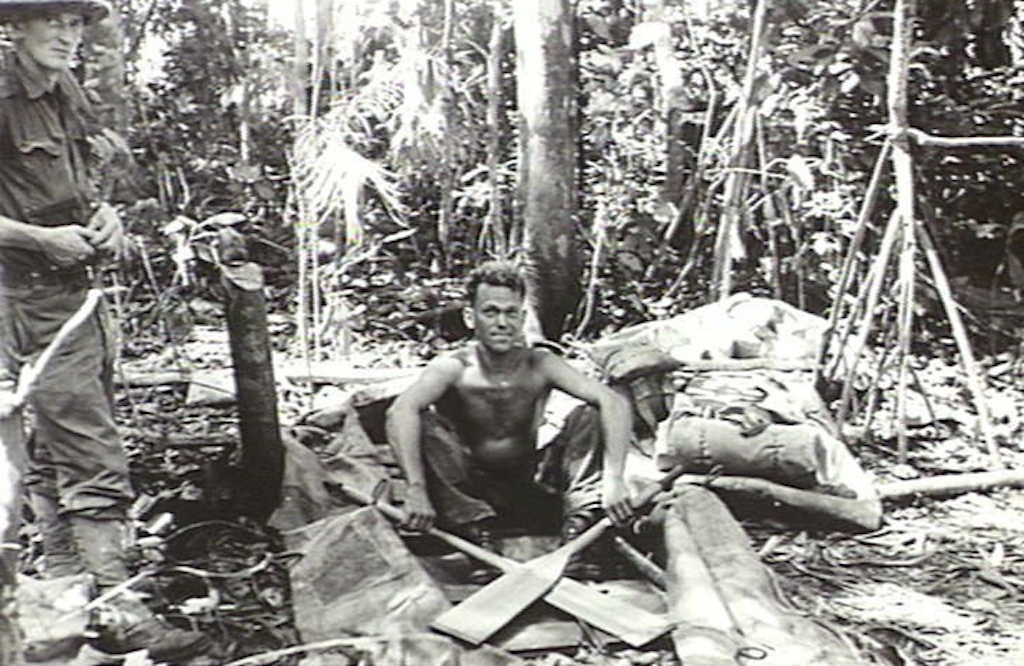

At the start of World War II in Europe in September 1939, Australia, as part of the British Commonwealth of Nations, made its military ready to join the fight, much the same as it had for World War I in 1914. Also, as in World War I, the Australian military combined forces with their neighbor and fellow Commonwealth member, New Zealand, to form the Australian and New Zealand Army Corps (ANZAC), with their soldiers called ANZACs. The World War One ANZACs gained a hard-won reputation as some of the best soldiers among all the British forces, with the associated heavy losses.
By 1940, Australia had committed half of the Royal Australian Air Force (RAAF) and some Royal Australian Navy (RAN) ships to assist with the war in Europe. In the Pacific, Imperial Japan, part of the “Pact of Steel” with fascist Germany and Italy, expanded its empire into the French colony of Indochina (now Vietnam, Laos, and Cambodia) after France formally surrendered to Germany. More important to Japan were the oil-rich Dutch colonies, still held by the Dutch government in exile, in what is now Indonesia. Even in the face of rising Japanese aggression, Britain could spare no troops for the defense of Singapore or Australia.
All during 1941, ANZACs fought with British forces in desperate battles against the Germans and Italians in Egypt, Libya, Syria, Lebanon, Greece, and Crete. Approximately 8,000 Australian soldiers were sent to Singapore to support British defenses in Malaya, and to the Netherlands East Indies to support Dutch garrisons there.
The Japanese attack on the U.S. Navy fleet at Pearl Harbor, Hawaii on December 7th, 1941, set off a far-ranging, staggering Japanese offensive across the Pacific, including the Philippines, New Guinea, the Dutch East Indies, Malaya/Singapore, and Burma. By early 1942, Imperial Japan’s forces were rolling from victory to victory across Asia and the Pacific.
The surprise and speed of the Japanese conquests found Australia with most of its military fighting in North Africa against Rommel’s Afrika Corps. When the Japanese landed on the north shore of New Guinea, a large, mountainous island just north of Australia, the island continent nation of Australia was now under direct threat.
On February 19th, 1942, 242 Japanese aircraft attacked the north Australian port town of Darwin, in two separate raids, destroying infrastructure, ships and two military airfields.
It soon fell to hastily assembled and poorly trained and equipped Australian militia forces, many of them teenagers, to prevent the Japanese from taking the south coast of New Guinea. They were sent up to Kokoda, a strategic mountain pass and trail system through the Owen Stanley Range in central New Guinea. The stage was set for what became known as the Kokoda Track Campaign, a series of desperate battles in the high tropical jungle, where constant rain, disease, and lack of supplies were almost a greater threat to both forces than each other.
From July through November 1942, the Australian militia soldiers designated the 30th Brigade, periodically reinforced by regular Australian Army units, fought a larger force of experienced, highly trained, and fanatical Japanese soldiers. Japanese forces captured the Kokoda pass at the end of July, and the Australian forces began a long dreary campaign of slowly delaying the Japanese from capturing Port Moresby, on the southern coast of New Guinea, a strategic location to threaten Australia. Both sides had to contend with tropical diseases such as malaria, dengue fever, scrub typhus, tropical ulcers, dysentery, and fungal infections. Clean water was hard to come by, and constant rain ensured everything stayed wet, day in and day out.

The Kokoda Track Campaign was part of a larger phase of the war in the southwest Pacific. Earlier in May, north of New Guinea in the Coral Sea, U.S. Navy task forces consisting of the aircraft carriers Yorktown and Lexington blunted a Japanese invasion fleet attempting to sail around the east end of New Guinea and capture Port Moresby from the sea. It was the first battle in which aircraft carriers were the primary weapons and ships from the two opposing fleets never had visual contact.
Eventually, a build-up of Australian forces began surging up the Kokoda Track from Port Moresby, while the Japanese forces suffered from a lack of supplies and reinforcements due to the American invasion of nearby Guadalcanal. There were reports of the Japanese resorting to cannibalism involving fresh Australian casualties. Australian forces benefited from aerial resupply, retook Kokoda, and continued north towards the coast.
By late 1942, Australian and American forces attacked the north shore Japanese beachheads at Buna and Gona, but stubborn resistance meant that fighting continued until January 1943. Australian forces suffered 625 killed and 1,055 wounded in combat; however, non-combat losses, mainly from illness, were estimated at triple the combat loss figures.
